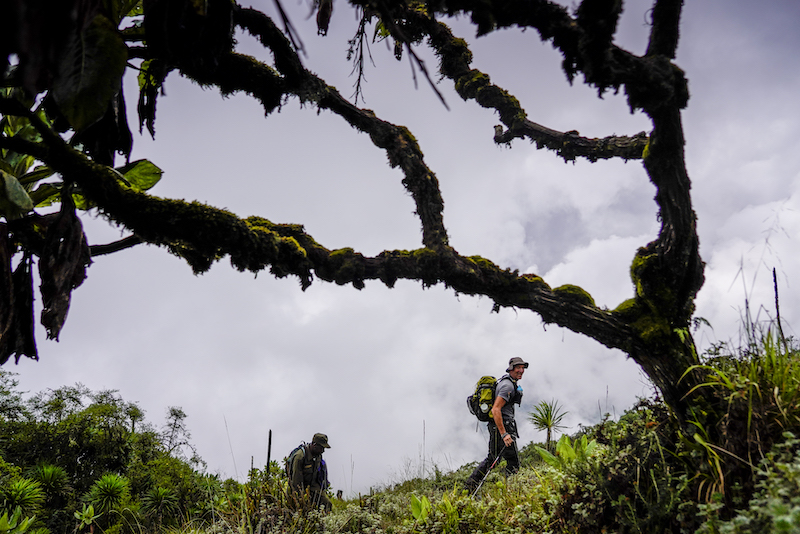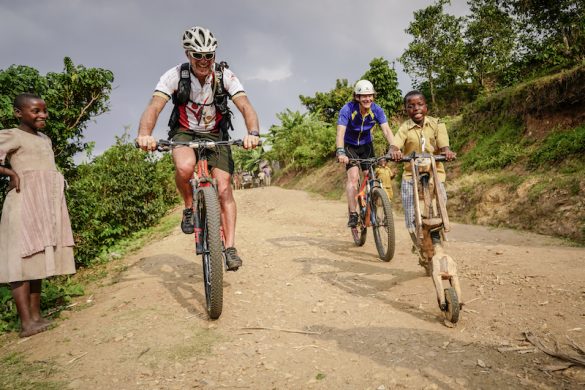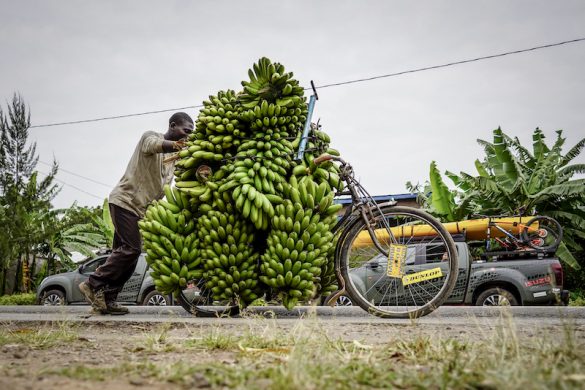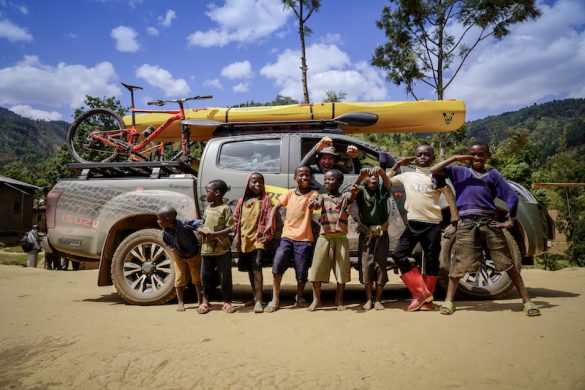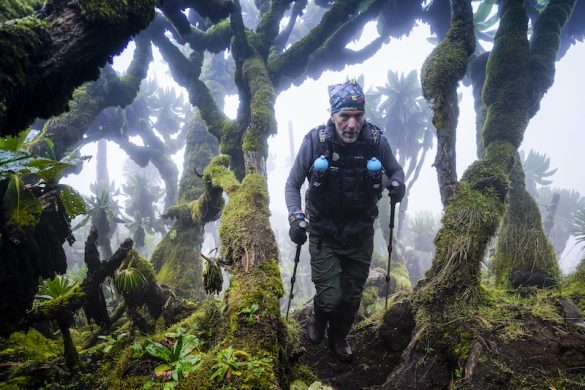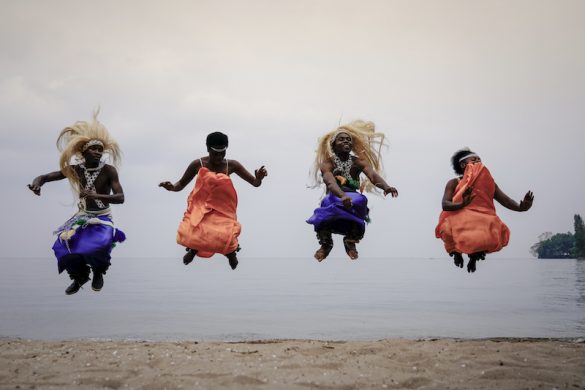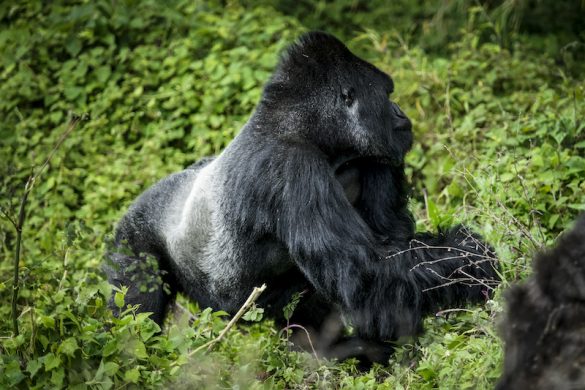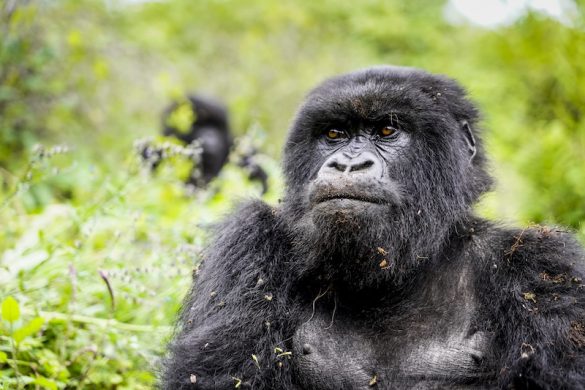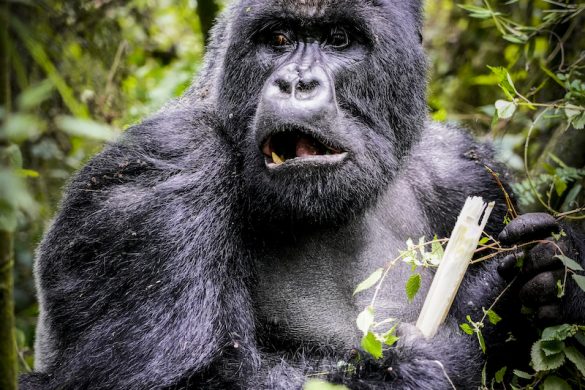Peter van Kets travelled to Rwanda and discovered a country that has risen from the ashes of its devastating past. Peter is a world-renowned professional endurance adventurer, inspirational speaker, best-selling author and conservationist.
As a speaker, he has become known globally as a specialist in corporate and personal resilience and the ability to persevere in a dynamic and turbulent economy. He has worked with major corporations across Africa, Europe, the Middle East and the US. He takes the lessons learnt from his expeditions and relates them to the business environment. His expedition stories are of survival, courage, perseverance, passion, loneliness, tenacity, amazing teamwork and the will to win.
He reflects on a great adventure to the land of a thousand hills.
When world-famous photographer Jacques Marais and I first started contemplating the Beyond Expeditions possibilities, the idea of doing something exciting in Central Africa became so tantalising it shot to the top of the expedition list quite quickly. Just contemplating the distances, the complex geography, the wars, the poverty, the lawlessness, all mixed in with beautiful people, exquisite vistas, rugged mountains, Avatar-like forests, ancient volcanoes, ice, snow and searing heat, the mountain gorillas, chimpanzees and the massive rift lakes was just overwhelming. Could anything be more exciting? It was, after all, going to be an expedition worthy of Victorian adventure writer Sir H. Rider Haggard’s book King Solomon’s Mines, which tells of the exploration of an uncharted region of Africa by a group of adventurers led by Allan Quatermain. It is the first-ever English adventure novel set in Africa. Now we were making plans to do the same some 130 years later. This would be called Beyond the Rift Valley Expedition.
Our team’s trek in two Isuzu 4×4 X-Rider double cabs from Cape Town to Rwanda’s capital, Kigali, via Botswana, Zambia and Tanzania was an epic journey in itself and one that I missed out on because of time constraints. It took them a week of intense 14-hours-a-day driving, dodging less-than-roadworthy’ trucks, roaming cattle and dodgy police officials. This is Africa! I flew into Kigali as they finished their journey. When they collected me from Immigration they all had a deer-in-the-headlights look about them.

The DUNLOP #BTRV Expedition – from Cape Town and via Botswana, Zimbabwe, Zambia and Tanzania, to Rwanda in East Africa – saw the #BeyondExpeditions Team exploring some of Africa’s most remote gravel roads on this mammoth cross-continental road trip.
My fondest memory of arriving at the airport was not that South African Airways had lost my luggage in Johannesburg, but that I was just about to be introduced to the real Rwanda. One of the passengers on my flight had had his luggage wrapped in protective plastic and was now busy leaving the luggage carousel when an airport official tapped him on the shoulder and in a very soft, deep tone said, ‘Excuse me, sir, but we do not allow such plastic into Rwanda. Would you mind if I remove it for you?’ (The reference was to single-use plastic.) The passenger, perplexed and worried, agreed. A pair of scissors appeared, the plastic was removed and the luggage returned promptly. Wow! I’d never experienced anything like this anywhere in the world, and here we were in Rwanda. Little did I know, but this was just the beginning of many, many, beautiful experiences and surprises this country would give us.
Before we left South Africa on this expedition, we often encountered people who were extremely negative about what we could expect in Central Africa. Stories of hijackings, kidnappings and corrupt officials are just a few. In hindsight, it became clear to me that it’s only those who have not travelled the dusty roads or made the effort to entwine themselves in local cultures that have this opinion (except for the dodgy officials, but not in Rwanda).
When you speak to anyone about Rwanda one of the first thoughts they have is the genocide that occurred there in 1994. This was the starting point for the team, to get an understanding of the country and its people before we started stomping around having fun on her soil.
A trip to the Kigali Genocide Memorial was first on the list and it was an incredibly sobering experience, one that I can only compare to visiting the Yad Vashem – The World Holocaust Remembrance Center in Jerusalem, Israel. Now when I look back, after experiencing the real Rwanda, I cannot believe that this could have happened to such a beautiful nation.
In a nutshell, the Rwandan genocide, also known as the genocide against the Tutsi, was a mass slaughter of Tutsi and moderate Hutu in Rwanda, which took place between 7 April and 15 July 1994 during the Rwandan Civil War.
The genocide was organised by members of the core Hutu political elite, many of whom occupied positions at top levels of the national government. Most historians agree that a genocide against the Tutsi had been planned for at least a year. However, the assassination of Rwandan president Juvénal Habyarimana on 6 April 1994 created a power vacuum and ended peace accords. Genocidal killings began the following day when soldiers, police and militia executed key Tutsi and moderate Hutu military and political leaders.
The scale and brutality of the massacre caused shockwaves worldwide; however, Western nations such as the US, Belgium, France, and others ignored the genocide. Most of the victims were killed in their own villages or towns, often by their neighbours and fellow villagers. Hutu gangs searched out victims hiding in churches and school buildings. The militia murdered victims with machetes and rifles. An estimated 800 000 Rwandans were killed, about 70% of the Tutsi population. The genocide ended with the military victory of the Rwandan Patriotic Front.
But after this history, Rwanda is a good-news country!
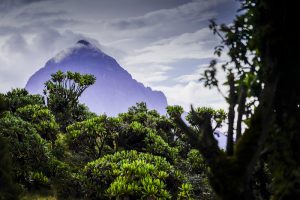
The DUNLOP #BTRV Expedition – from Cape Town and via Botswana, Zimbabwe, Zambia and Tanzania, to Rwanda in East Africa – saw the #BeyondExpeditions Team exploring some of Africa’s most remote gravel roads on this mammoth cross-continental road trip.
My intention for this expedition was to be the first person to traverse the great Congo-Nile Divide – the series of mountains, hills and volcanoes that separate the Nile River to the east and the Congo River to the west. The source of this traverse is in the south of Rwanda in a spectacular rainforest (that gets 1 800mm of rain a year) in the Nyungwe National Park and finishes on the border with the Democratic Republic of Congo and Uganda in the north. The divide starts really close to the Burundi border and as we drove into the reserve area we could not help noticing a really strong military presence with hundreds (literally) of really well-armed soldiers patrolling the area. Arriving at the park’s headquarters we were told that we were absolutely not allowed in the area because of a major landslide. Right, something was amiss and we were not about to start an argument with this extremely competent and serious-looking military personnel. However, this was a big deal as it meant that the whole expedition was in jeopardy and that we would, in fact, not be able to achieve what we came here to do. And it was just the start! Enter Plan B!
After a brief chat with the team, we decided not to waste any time but rather take advantage of a bad situation. We decided to change our tack and turn the expedition into a series of smaller adventures. Firstly, to immediately climb the highest mountain in the area called Bigugu, to be swiftly followed by a cranking mountain-bike ride along the exquisite Congo Nile Trail, which runs along the edge of one of the seven great African Lakes, Lake Kivu. Once we were in the north of the country, we would head into the Volcanoes National Park Rwanda to climb and summit the Bisoke and Karisimbi volcanoes. Then we would head to the north of Lake Kivu and kayak back down to the south. The final part of the adventure would see us trekking to the famous highlands to see the mountain gorillas and then spend some time with a non-profit organisation called Children in the Wilderness.
The decision to change plans was not an easy one for a number of reasons (my psyche included). We had been granted many permits (Rwanda is a wonderfully controlled country) by the Rwanda Development Board (RDB) facilitated by Ingrid Baas who heads up Wilderness Safaris in the area. These permits are strictly controlled and any changes made to them would take days, if not weeks, to be approved. After a few phone calls to Ingrid and the RDB, we eventually settled on the new plan. And it worked magnificently.
Rwanda, as we would quickly discover, is one of the most densely populated countries in Africa and with that comes the immense pressure that human habitat has on wilderness areas and its fauna and flora. Many of the species in these areas are critically endangered. The government, with the help of the RDB, understands the value of protecting these areas and so conservation is high on its priority list.
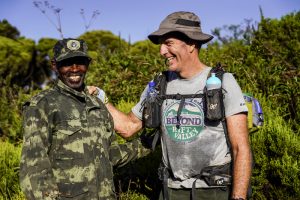
The DUNLOP #BTRV Expedition – from Cape Town and via Botswana, Zimbabwe, Zambia and Tanzania, to Rwanda in East Africa – saw the #BeyondExpeditions Team exploring some of Africa’s most remote gravel roads on this mammoth cross-continental road trip.
Once we descended Mount Bigugu, our mission was to try and find the famous troops of chimpanzees that make Nyungwe Forest National Park their home. There is very little chance that you will be able to come across these chimps or in fact any of the endangered animals outside national parks in Rwanda. They are all strictly monitored and you will almost always be accompanied by well-armed rangers. We left the park’s headquarters with six AK47-bearing soldiers and two trackers. It didn’t take long to find the prize and we had an experience of a lifetime. By a pure fluke we arrived as the troop were hunting colobus monkeys; we witnessed part of the hunt and the ensuing fighting and feasting. The rangers of the area are very clearly devoted to the conservation of these chimps and became quite animated.
The wonder of the Nyungwe forests soon dissipated once I got my backside onto my Giant mountain bike and started the ride to Volcanoes National Park in the north. The Congo Nile Trail is a well-established bicycle route fringed by the turquoise shores of Lake Kivu with a few inland loops. There is nothing flat about Rwanda, so it’s a proper ride. The normal time for completion is between eight-to-10 days. We were under some time pressure so pushed it to three days.
There was always a buzz as I passed through villages. Dozens of young children would follow me. Some shouting ‘umzungu… umzungu’ as I entered their village, alerting others that there was a very rare thing passing through wearing strange clothing on a bicycle not made of wood. My smile muscles suffered the most. These people were the most friendly I had encountered anywhere in Africa, including my home country.
Next on the adventure list was to climb two of the well-known volcanoes in succession at Volcanoes National Park, Bisoke and Karisimbi. This area is also well known for its conservation of mountain gorillas, an important part of Rwanda’s tourism sector contribution to GDP. Both of these volcanoes border the Democratic Republic of Congo. Bisoke is an active volcano in the Virunga Mountains, which forms part of the Albertine Rift. It peaks at 3 711m and has one of the most beautiful caldera lakes I have ever seen.
The route to the summit is steeped with very few switchbacks. Our film crew, unaccustomed to vigorous exercise, had to dig deep to get to the summit, but it was worth every bit of suffering.
With not much time to dawdle at the summit, we took our pictures, howled with joy and started the trek down to meet the rangers who would escort us up Karisimbi. We decided that the task would be too much for the film crew who were battling to get enough oxygen as it was. The idea behind climbing the volcanoes consecutively was to save time, but they had never been done like this before so we had to plan carefully.
Our route took us past the famous home and research centre of gorilla conservationist, Dian Fossey. It was eerily misty and the team walked in silence, contemplating and honouring the great work she had done in this area for so many years. It took us the rest of the day to trek at full speed just to get to the base of Karisimbi where we set up camp. The near-vertical ascent would begin the following day at dawn.
We were entering a world that I could only describe as the closest thing to Avatar as I had ever seen. Karisimbi is an inactive volcano, also in the Virunga Mountains, and peaks at 4 507m. It was to be a tough climb in freezing conditions only made good by the presence of giant caesium and lobelia trees. The summit is not beautiful! We were in heavy, freezing mist so we almost immediately footed it back down.
We had made special arrangements with the RDB to track a group of mountain gorillas, known as the Igisha Group, on the western side of Karisimbi. The trek, again with heavily armed soldiers, was quick. The trackers had been located and the Igisha Group was close at hand. We were only allowed one hour with the group so we really had to capitalise our time with them.
The big silverback greeted us with a welcoming grunt as if to say ‘You are welcome here, but be cool!’ Which we were; there is no alternative. This was one of the most humbling and emotional encounters I have ever had. The hour flew by with the gorilla families letting it all hang out, playing games, eating, grooming as if we were not even there.
This type of interaction is only made possible by the immense conservation efforts of the RDB and some of the safari operators in the area. As a tourist you will have to fork out US$1 500 per person for that one hour. It may seem like a substantial sum, but as the famous conservationist Ian Player once put it: ‘Conservation without funding is conversation.’ And it’s working! The mountain gorillas have recently been taken off the ‘critically endangered’ list and are now just ‘endangered’. The population has gone from 500 in the late 1970s to about 10 000 presently.
One of the safari operators in the area, Wilderness Safaris, has set up a non-profit organisation called Children in the Wilderness (CITW). Both Jacques and I are proud ambassadors. Their primary function is to educate children born either in wilderness areas or rural regions close by about the importance of conservation. Among other things, their focus is to get these children to love their natural environment. According to Wilderness Safaris: ‘If we are to ensure that these places continue to exist – in this generation and those to come – we need the rural children of Africa to understand the importance of conservation and its relevance in their lives. Hence, our CITW programme focuses on environmental and life skills education for rural children; it focuses on the next generation of decision-makers, inspiring them to care for their natural heritage and to become the custodians of these areas in the future.’
‘IN THE END, WE WILL CONSERVE ONLY WHAT WE LOVE. WE WILL LOVE ONLY WHAT WE UNDERSTAND. WE WILL UNDERSTAND ONLY WHAT WE ARE TAUGHT.’
– BABA DIOUM, SENEGALESE FORESTRY ENGINEER
The programme in Rwanda is run by the ever-efficient Ingrid Baas who also manages the Bisate Wilderness Camp. She and her team are effectively educating and helping a few hundred local children from the Volcanoes National Park region to reforest areas outside the park for future gorilla population growth and sustainability. Our team had the incredible fortune of spending a day with them learning about different trees and their importance and then planting them. Next time I go to Rwanda I will visit that forest and know that I have played a tiny role in the conservation of mountain gorillas.
petervankets.co.za;
Twitter @PetervanKets;
Facebook – peter.vankets.3
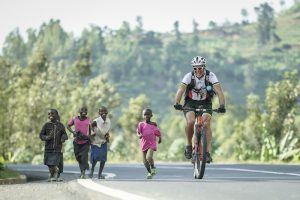
The DUNLOP #BTRV Expedition – from Cape Town and via Botswana, Zimbabwe, Zambia and Tanzania, to Rwanda in East Africa – saw the #BeyondExpeditions Team exploring some of Africa’s most remote gravel roads on this mammoth cross-continental road trip.
[Travel Tuesday: Exploring the land of a thousand hills – Peter van Kets Rwanda]

